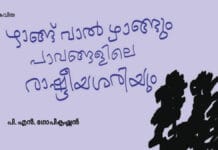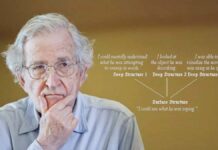Transformational Generative grammar is based on the assumption that sentences are of two types- those with the simplest structures are called the basic or kernel sentences. Several sentences with more complex structures can be derived out of the kernel sentences. These are called Transforms. Kernel Sentences or Basic Sentences are the simple sentences that form the foundation of the more complicated sentences we generally use.
A kernel Sentence has to be first analysed with the help of Phrase Structure rules are discussed under IC Analysis and then made to pass through transformational rules to arrive at a surface structure. A Kernel Sentence is a deep structure to which a string of transformations is applied to generate the surface structure.

The notion of a rule is fundamental to TG. TG is ‘rule-based’ grammar. Rules are part of the device for generating the sentences of the language and they own their justification to the part they play in the generation. The Transformational rules (T-rules) of TG grammar should not be identified with the rules found in other types of grammar. Three components are involved in any transformational framework. They are
- The base Component / Constituent Structure / Phrase Structure
- The Transformational Component
- Morpho- phonemic Component
The Base Component/PS Component
Phrase structure rules in transformational generative grammar form the basic part of the grammar. These rules are technically described as the base component. Using Rewrite rules or PS rules, the base component generates the structure underlying the kernel sentence in the form of the string.
E.g., He drew the picture.
After applying the PS rules, the output is
S -> N+ MV + Det + N
This is the kernel string or the deep structure.
The Transformational Component
The output string of the PS Component is carried into the terminal string by the application of T- rules. There are two types of T rules-
- Optional T-rules (E.g., passive transformation, interrogative transformation)
- Obligatory T- rule (E.g., Number transformation dealing with the agreement of a subject NP with its verb). The transformations affected by the application of T rules are also of two types:
- Singularly Transformation- It operates upon only one terminal string.
- Generalised Transformation- It combines two or more terminal strings.
Any T rule contains two parts-
- Structural Description(SD)- representation of the Phrase Structure of the kernel sentence.
- Structural Change (SC)- This specifies what the structure looks like after the T rule has been applied.
Morpho-phonemic Component
This part converts the output of the transformational component into a phonemic transcription. It consists of the processes by which terminal strings are given shapes that can be identified as utterances.
TG grammar is generated -It must be able to generate all and only the grammatical sentences of a language. Strong grammar will be capable of producing all the grammatically correct sentences and reject the ungrammatical sentences of a language. TG grammar makes use of a set of rules which are formalised. This is a hallmark of the TG approach.






























Excellent job, Devika. You really are an asset to the teaching profession.